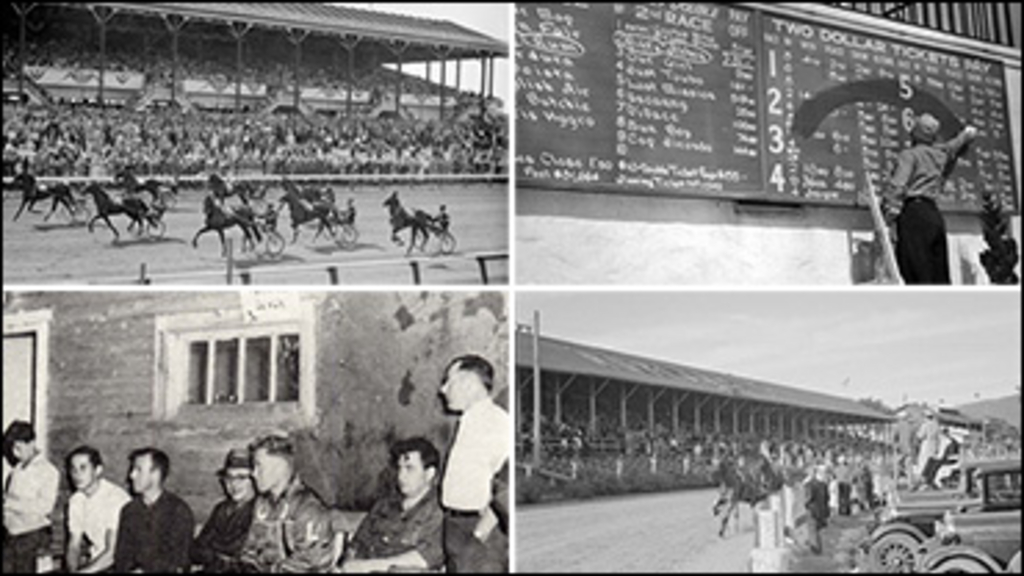
This week's edition of Rewind takes on a slightly different twist as it is mainly pictorial. Robert Smith has delved into the archives and assembled a medley of rather old photographs covering a wide range of subjects and themes. Many of them tell a story of some phase of the evolution of the sport of harness racing.
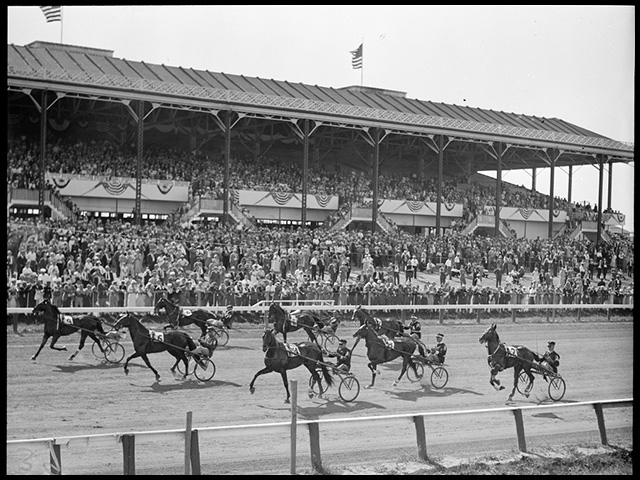
An old racing scene from the early 1930's. Huge enthusiastic crowds were common wherever quality racing programs were staged.
Betting on the chalk
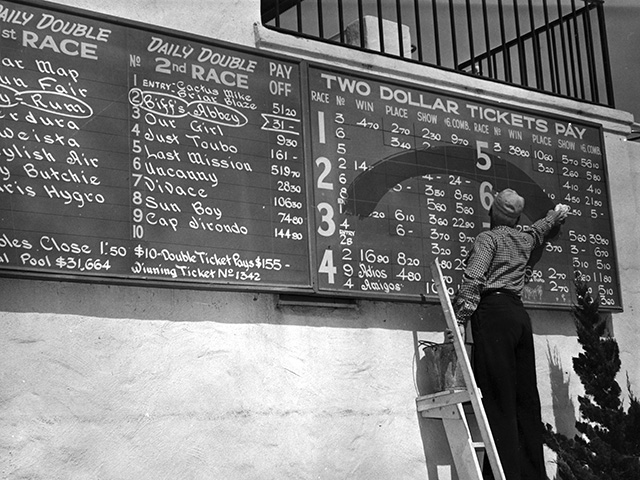
This is where the phrase, "Betting on the chalk" started. Most race followers are familiar with the term "chalk" but perhaps not too many know the origin of this age old saying. Legend has it that it dates back to the days when no automated tote boards existed and people were employed to show odds and other information on a chalk board.
A Very Old Race Programme
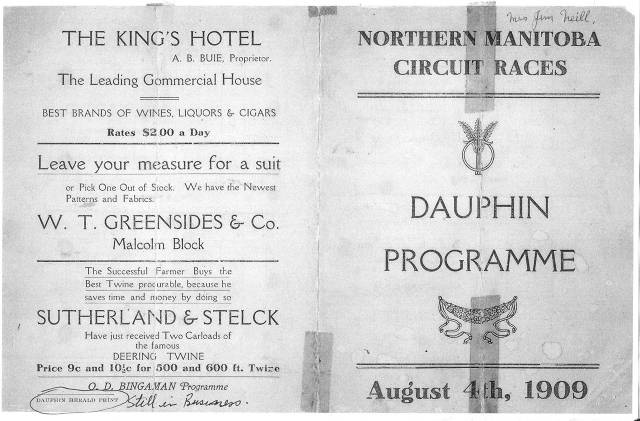
A few years ago a wonderful lady by the name of Betty Wallace of Dauphin, Manitoba sent me a package of extremely interesting material covering a lot of harness racing history. A great deal of the accounts, records and stories pertain to Western Canada. She has been an avid history buff down through the years and continues to be keenly interested in the earlier days of our sport. Mrs. Wallace and her late husband Jim Wallace raced for many years in Quebec as well as Western Canada.
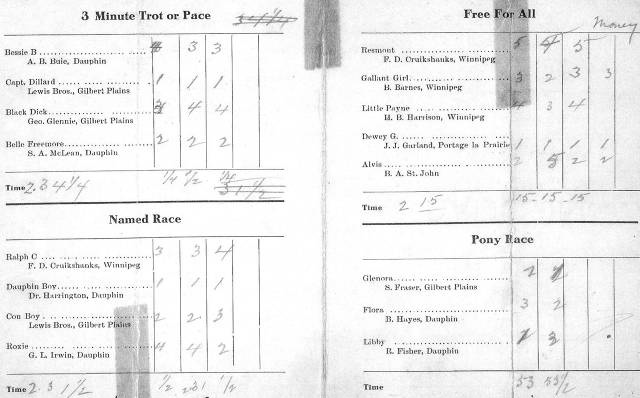
One of the items which particularly caught my eye was a race program dated 1909. I am sure there are older ones around but this one at 109 years is the oldest I have seen. Notice that the word "programme" is even in the old style.
Blue Bonnets Clubhouse
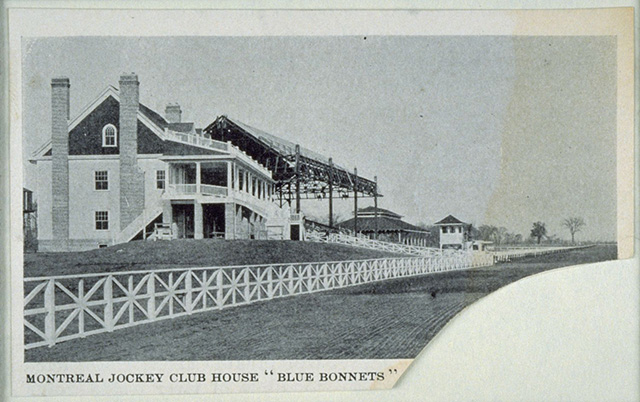
Clubhouses at racetracks go back a long way but only at the larger more stately locations. The above photo appears to be an oldie and also shows a very nice setup at the fabled Blue Bonnets track in Montreal
Racing In Vermont
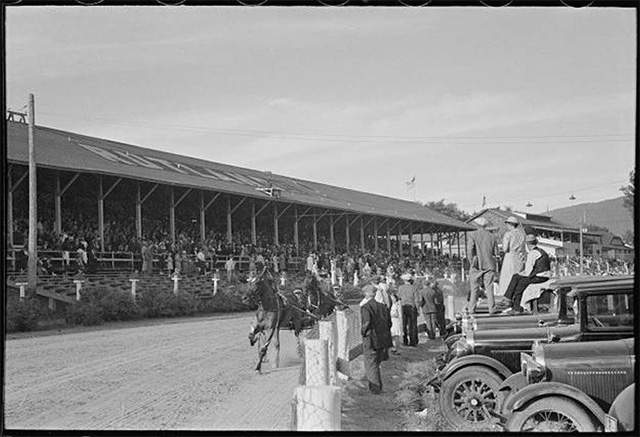
This great old photograph taken many years ago at Rutland, Vermont (see the name on the grandstand roof) shows a field of horses entering the first turn. The infield with cars parked close to the track made a great vantage point for race viewers. Because of the proximity of the northern border of Vermont to the Province of Quebec, many Canadian horsemen competed there, especially at Fair time. Towns such as Essex Junction, Barton, Tunbridge and Lyndonville were stops in The Green Mountain State.
Knocker's Bench
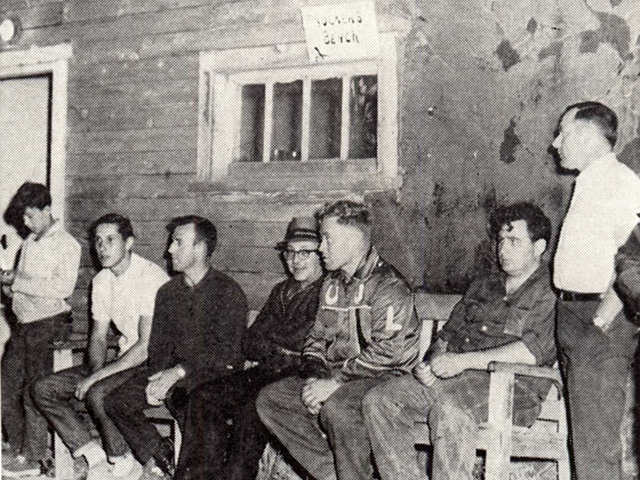
The term "Knocker's Bench" has been around for a long time. A place where a variety of onlookers and generally interested people gathered to visit and watch the goings on. Unfortunately I have been unable to find the origin of the words but thankfully do have a picture of one. This one I believe was taken at a Maritime track, perhaps at Charlottetown Driving Park. The sign above while a bit obscure does appear to bear those two words. (Harness Horse)
Starting Gates Have Come A Long Way
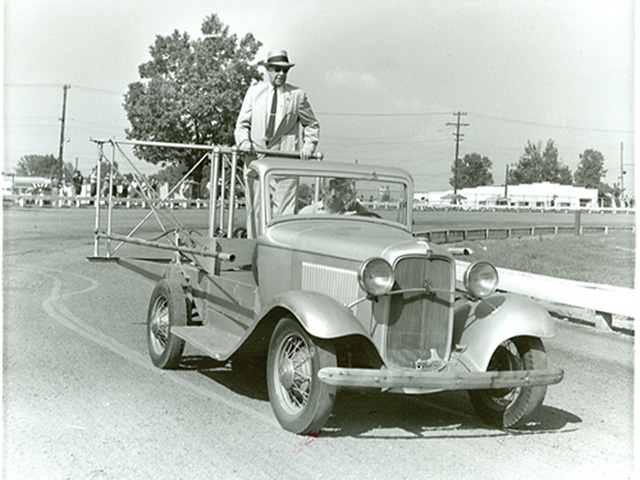
The starting gate has been around for well over 70 years. During that time it has taken on many looks.
Accident At Alvinston
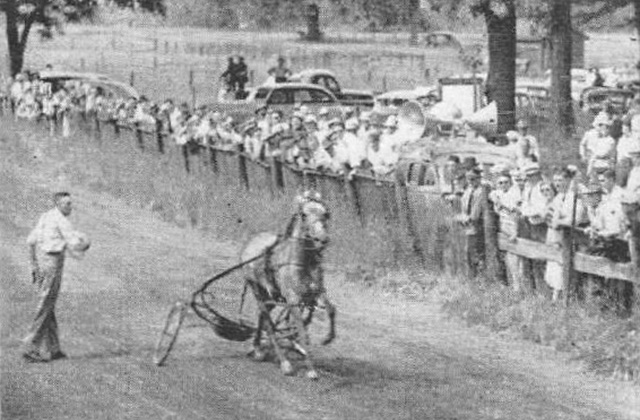
Accidents and runaways have always been a part of racing. There wasn't always a camera person handy to capture the action but on this occasion there was.
This rather "fuzzy" old photo taken many years ago at Alvinston, Ont. (Lambton County), depicted what was not an uncommon scene at some of the old race days. Narrow tracks, sometimes in bad condition, old and worn out equipment and a number of other factors often led to accidents. It was not unusual for well-meaning bystanders to leap out onto to the track to catch a runaway horse; unfortunately that was about the worst thing that could happen. With few security measures such as barriers or fences in place, coupled with ineffective PA systems, it is a wonder that more people were not injured.
Such were the times.
When The Infield Was In
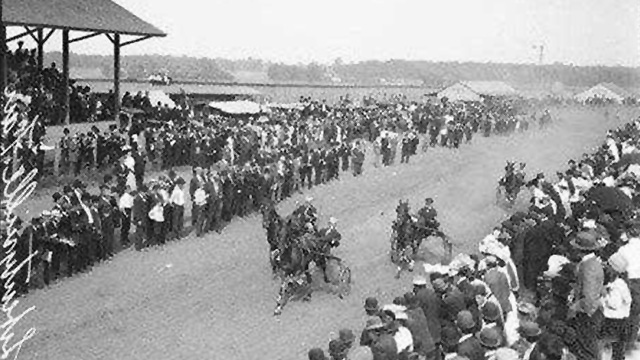
In the early days of racing the track's infield was an important location. It not only housed the judge's stand, it was also a favourite parking area as well as one of the prime locations for people to position themselves to watch the races. Today the infield is just a barren wasteland and not an integral part of any racing operation. These old pictures display how it was once used. I am sure that safety concerns played a huge role in its demise.
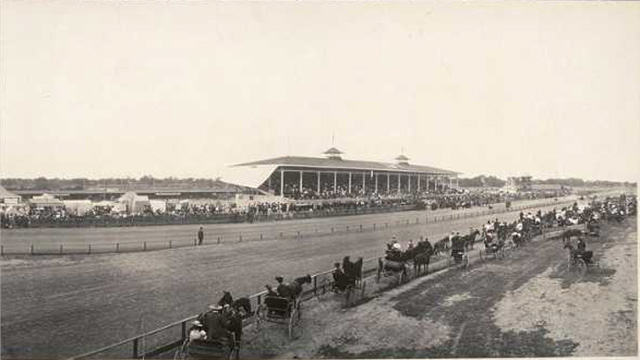
Harrowing The Track
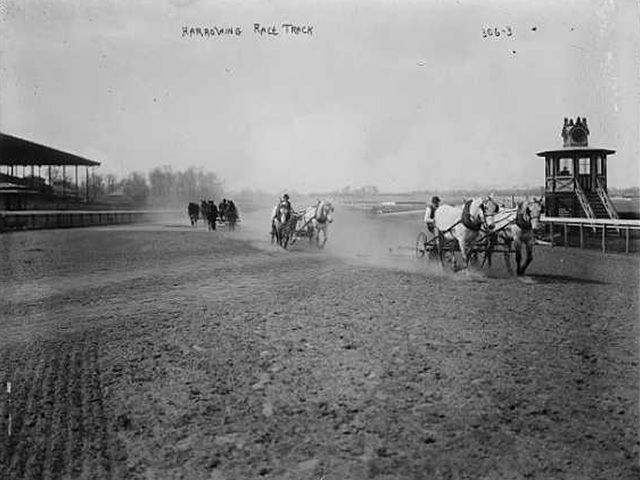
Teams of horses were used to condition the track long before the days of tractors or other motorized vehicles. These old photographs capture some very interesting aspects of the early days of racing. Thankfully someone had the foresight to take the pictures and also it is fortunate that they are still around for us to enjoy.
The Old Paddock
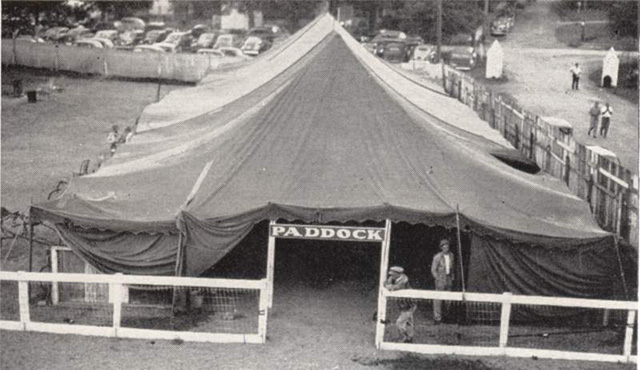
In the old days when most racing was done at Fairs and other small venues no paddocks existed. Everyone just raced from the stables or from their trailer. They did not come into existence until the larger raceways instituted them to make for orderly and timely execution of the races. The earliest paddocks were pretty simple as shown above. This paddock was located at Northville Downs in Michigan. Due to wartime restrictions resulting in a scarcity of building materials Track officials made the best of the situation and used a tent.
(Harness Horse)
No Head Numbers OR Saddle Pads
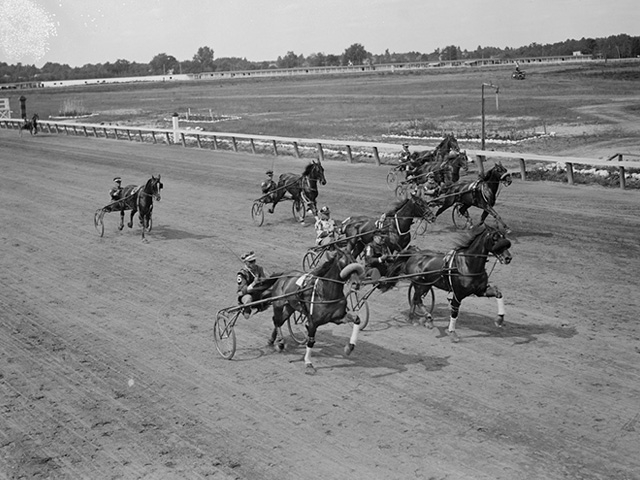
?
At one time back in the history of harness racing no head numbers or saddle pads were worn to identify the horses. In the earliest days silks were worn and the drivers wore numbers on their sleeves. This great old 1930's photo taken at Rockingham Park which was located at Salem Depot, N.H., shows the start of a trotting race. Each driver can be seen wearing a large number on their sleeve.
Delvin Miller, the great horseman from Pennsylvania once told me a story about a young driver named Benny Sturgeon. He was making his first ever start and when someone pinned the number on his sleeve they put the safety pin right through his skin. He was so nervous and excited he didn't notice it until he took his driving coat off at the end of the day.
Who Is It?
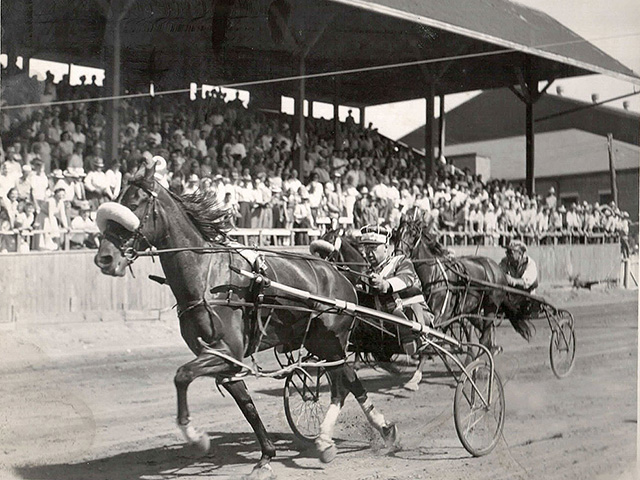
Can you correctly identify the driver in this photo? He was involved in Canadian harness racing for a very long time. The correct answer will appear as usual during the coming week.


This week's photo featured
This week's photo featured the late Wm. Gardner of Goderich, Ont. As suggested by Mr. Roebuck he is driving at the Goderich track and the horse is Huron Express an outstanding performer of the early 1950's. Mr. Gardner served as a highly respected racing judge for many years after a serious accident ended his driving career.
Morris MacDonald?
Morris MacDonald?
It looks to me like Bill
It looks to me like Bill Gardner at his home track in Goderich. I think it is Keith Feagan driving the horse behind him.
Gerry Roebuck